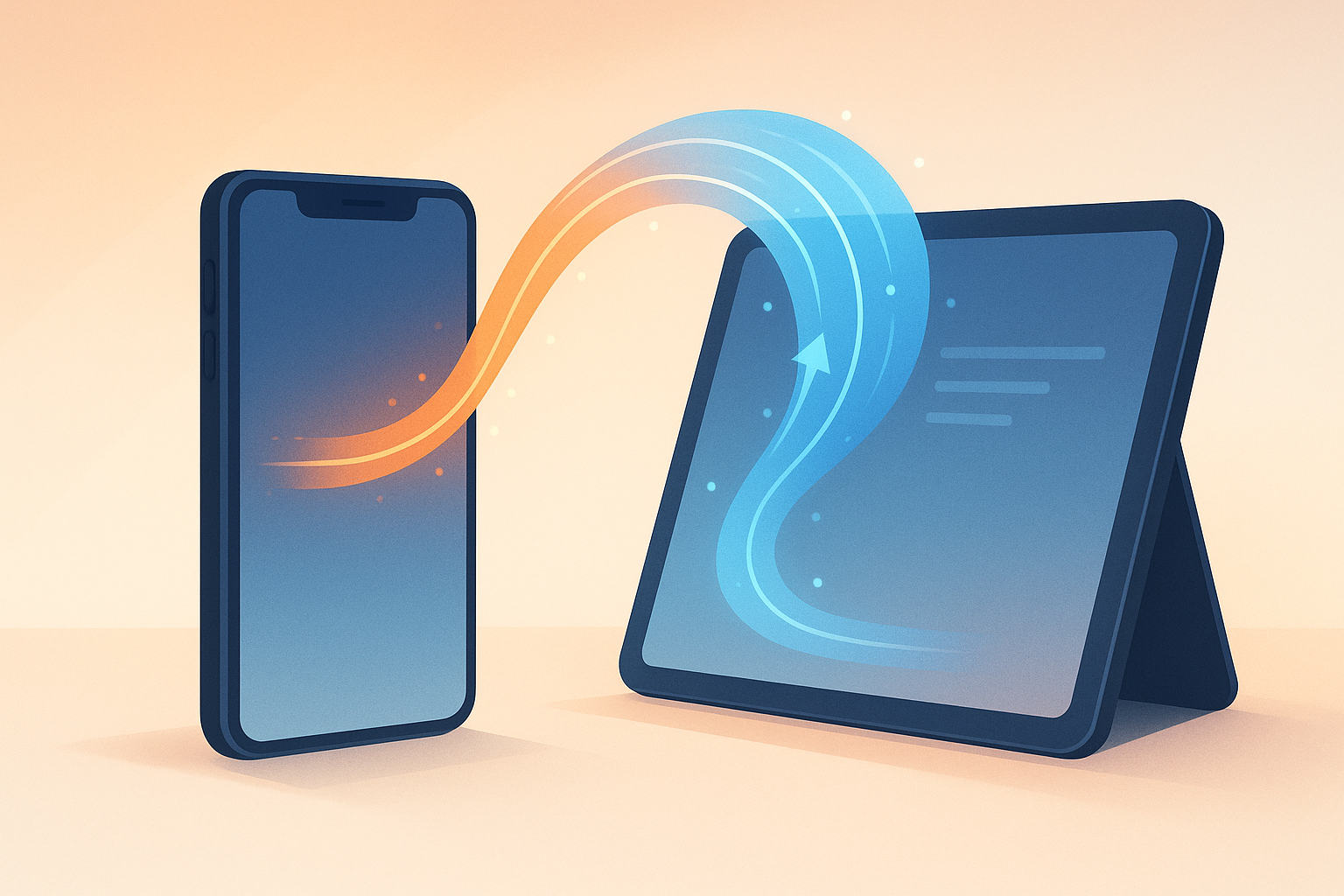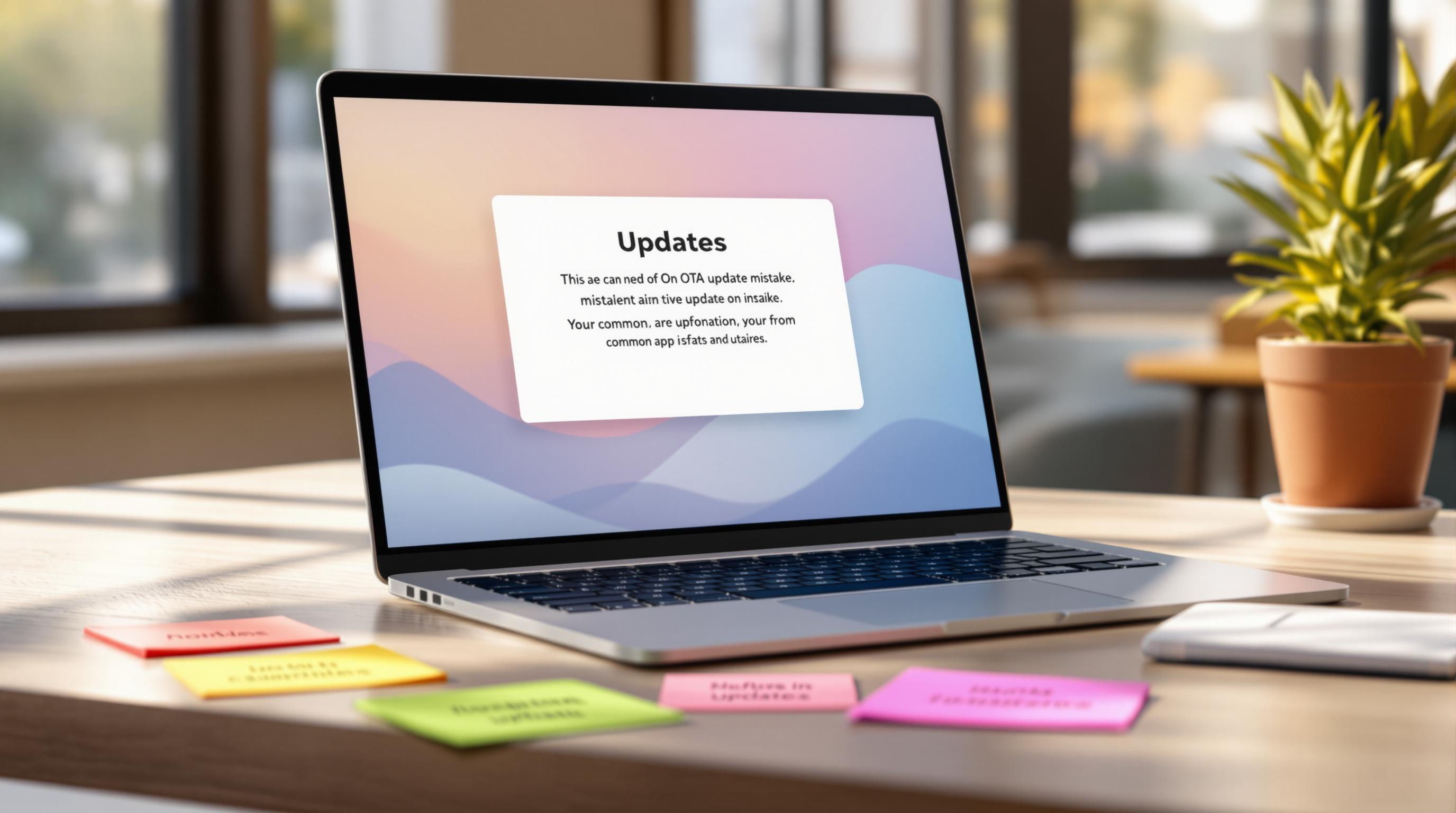We’re excited to announce Capgo Cloud Build - a new way to build your Capacitor apps for iOS and Android directly in the cloud, without the need for local development environments or CI/CD infrastructure.
The Problem We’re Solving
Building native mobile apps has always been a pain point for web developers. You need:
- Local Development Tools: Install and maintain Xcode (30+ GB) and Android Studio on your machine
- Mac Hardware: iOS builds require a Mac, which can be expensive or impossible on Linux/Windows CI runners
- CI/CD Configuration: Set up complex GitHub Actions or other CI/CD workflows with build caching, credentials management, and more
- Dependency Management: Keep build tools, SDKs, and certificates up to date across environments
What if you could skip all of that and just run a single command?
Introducing Cloud Build
With Capgo Cloud Build, building your app is as simple as:
# First time: Save your credentials locallynpx @capgo/cli@latest build credentials save --platform iosnpx @capgo/cli@latest build credentials save --platform android
# Then buildnpx @capgo/cli@latest build com.example.appThat’s it. No Xcode, no Android Studio, no complex CI/CD setup. Just one command that:
- Zips your project locally
- Uploads it to Capgo’s cloud infrastructure
- Builds your app on dedicated infrastructure using your saved credentials
- Streams logs to your terminal in real-time
- Submits to the App Store and Play Store (if configured)
How It Works
We built Capgo Cloud Build using the same approach as Expo EAS Build - dedicated cloud infrastructure that handles all the complexity for you.
But here’s what makes us different: we’ve been doing this for 3 years. We’ve been building native apps for our clients internally since the beginning of Capgo, and we’ve learned exactly what it takes to build Capacitor apps reliably.
Our Expertise
Over the past three years, we’ve:
- Built our own Fastlane system - We’ve created custom Fastlane configurations specifically optimized for Capacitor apps
- Mastered Capacitor builds - We have deep knowledge of what’s important when building for Capacitor, from plugin configurations to native dependencies
- Focused on native-only - We build only the native parts (iOS and Android). Your JavaScript stays on your side - we never touch or store your web code
- Refined our infrastructure - Thousands of internal builds have helped us perfect our build system before making it available to you
This isn’t a new experiment. It’s battle-tested infrastructure we’ve relied on for years, now available as a service.
For Android
Android builds run in secure Cloudflare sandboxes with instant cleanup after completion. Your app is compiled using Gradle with our Capacitor-optimized build scripts, signed, and ready to submit to the Play Store.
For iOS
iOS builds run on dedicated Mac machines (Scaleway Mac minis) provisioned on-demand. We use our custom Fastlane setup - refined over years of Capacitor builds - to build, sign, and submit your app to TestFlight. Each build runs in an isolated macOS user account for security, and machines are automatically cleaned up after 24 hours.
Real-Time Logs
Unlike other solutions, we stream build logs directly to your terminal as they happen. You can watch:
- Dependency installation
- Build compilation
- Code signing
- App store submission
- Any errors or warnings
And here’s the important part: we don’t store your logs. They’re only available during the build through your CLI session, ensuring your privacy.
How Credentials Work
Before you can build, you need to provide your signing credentials. Capgo handles this with maximum security in mind.
Saving Credentials Locally
Your credentials are stored locally on your machine in ~/.capgo/credentials.json:
# For iOS - provide certificates and provisioning profilesnpx @capgo/cli@latest build credentials save --platform ios \ --certificate ./path/to/cert.p12 \ --p12-password "your-password" \ --provisioning-profile ./path/to/profile.mobileprovision
# For Android - provide keystore and passwordsnpx @capgo/cli@latest build credentials save --platform android \ --keystore ./path/to/keystore.jks \ --keystore-alias "your-alias" \ --keystore-key-password "key-password" \ --keystore-store-password "store-password"These credentials are never uploaded to Capgo until you request a build. They stay safely on your machine.
What Happens During a Build
When you run a build command:
- Local: CLI reads credentials from
~/.capgo/credentials.json - Upload: Credentials are sent securely over HTTPS to Capgo’s build servers along with your project
- Build: Credentials are used ONLY during the active build process
- Cleanup: Credentials are automatically deleted from Capgo servers after the build completes
Security Guarantees
Here’s what we guarantee about your credentials:
- ✅ Never stored permanently - Credentials exist on Capgo servers only during the active build
- ✅ Automatic deletion - Deleted immediately after build completion (maximum 24 hours even if build fails)
- ✅ No logs, no artifacts - We don’t store build logs or IPA/APK files that might contain credential traces
- ✅ Ephemeral environments - Build environments are completely destroyed after use
- ✅ Direct to stores - Apps go directly to App Store/Play Store - Capgo never keeps them
Managing Your Credentials
You have full control over your saved credentials:
# List saved credentials (passwords masked)npx @capgo/cli@latest build credentials list
# Clear credentials for a specific platformnpx @capgo/cli@latest build credentials clear --platform ios
# Clear all credentialsnpx @capgo/cli@latest build credentials clearWhat Credentials Are Needed?
For iOS:
- Build certificate (.p12 file and password)
- Provisioning profile(s) (.mobileprovision files)
- Optional: App Store Connect API key (for automated submission)
For Android:
- Keystore file (.jks or .keystore)
- Keystore alias
- Keystore key password
- Keystore store password
- Optional: Google Play service account JSON (for automated submission)
See our credentials documentation for detailed setup instructions.
Privacy & Security First
Beyond credentials, we’ve designed the entire build system with privacy and security in mind:
- No Log Storage: Build logs stream to your terminal in real-time via Server-Sent Events (SSE) but are never persisted to disk or databases
- No Artifact Storage: Your built IPA/APK files go directly from our build machines to App Store/Play Store servers - Capgo never stores them
- Automatic Cleanup:
- Android: Build sandbox destroyed instantly after completion
- iOS: Mac user account cleaned after build, machine dismissed after 24 hours
- Isolated Builds: Each iOS build runs in a completely separate macOS user account with its own keychain
- Your Code Privacy: We only build native parts - your JavaScript/HTML/CSS never touches our servers
- No Build History: We don’t maintain a database of your builds, versions, or any build metadata beyond what’s needed for active builds
Use It Anywhere
Cloud Build works everywhere - your local machine, GitHub Actions, GitLab CI, or any CI/CD platform.
Local Development
On your local machine, save credentials once and build anytime:
# One-time credential setupnpx @capgo/cli@latest build credentials save --platform ios \ --certificate ./certs/dist.p12 \ --p12-password "$P12_PASSWORD" \ --provisioning-profile ./certs/profile.mobileprovision
# Build anytimenpx @capgo/cli@latest build com.example.app --platform iosCI/CD Integration
In CI environments, you can either:
Option 1: Save credentials in CI (recommended for simplicity)
# GitHub Actions example- name: Save credentials and build env: CAPGO_TOKEN: ${{ secrets.CAPGO_TOKEN }} P12_PASSWORD: ${{ secrets.P12_PASSWORD }} run: | # Decode base64-encoded credentials from secrets echo "${{ secrets.IOS_CERTIFICATE_BASE64 }}" | base64 -d > cert.p12 echo "${{ secrets.PROVISIONING_PROFILE_BASE64 }}" | base64 -d > profile.mobileprovision
# Save credentials npx @capgo/cli@latest build credentials save --platform ios \ --certificate ./cert.p12 \ --p12-password "$P12_PASSWORD" \ --provisioning-profile ./profile.mobileprovision
# Build npx @capgo/cli@latest build com.example.app --platform iosOption 2: Provide credentials inline (for advanced use cases)
You can also pass credentials directly in environment variables - see the credentials documentation for details.
No need to configure Mac runners, manage build caches, or install SDKs in your CI environment. Capgo handles all of that in the cloud.
Simple, Transparent Pricing
We charge based on actual build time used:
- Android builds: 1× multiplier
- iOS builds: 2× multiplier (due to dedicated Mac hardware costs)
No surprise fees, no minimum commitments. You only pay for what you use.
Your Code, Your Responsibility
One important principle of Capgo Cloud Build: we only build the native parts.
Your JavaScript, HTML, and CSS stay on your side. We never process, inspect, or store your web code. You’re responsible for building your web assets locally (using npm run build or your preferred build tool), and we handle the native compilation.
This separation is intentional:
- Better security - Your application logic never leaves your control
- Faster builds - We don’t waste time rebuilding your web code
- Clear responsibility - You control your web build process; we handle the native complexity
What About Live Updates?
Cloud Build complements our existing live update system. Here’s how they work together:
- Cloud Build: For native app changes (plugins, permissions, native code) that require App Store/Play Store review
- Live Updates: For web code changes (HTML, CSS, JavaScript) that can be deployed instantly without review
Use Cloud Build when you add a new plugin or change native configurations. Use live updates for everything else. Together, they give you the fastest possible deployment workflow.
Current Status: Public Beta
Cloud Build is currently in public beta. We’re working with a select group of early adopters to refine the experience before opening it to everyone.
Interested in trying it out? Join our Discord and let us know - we’d love to have you as an early tester!
Getting Started
Ready to build without the hassle? Check out the Cloud Build documentation to learn more about:
- Setting up credentials - iOS certificates and Android keystores
- Getting started guide - Your first build in 5 minutes
- iOS-specific setup - Certificates, provisioning profiles, and App Store Connect
- Android-specific setup - Keystores and Play Store configuration
- CI/CD integration - Automate builds in your pipeline
- Troubleshooting - Common issues and solutions
What’s Next?
We’re actively working on:
- Faster iOS builds: Caching dependencies across builds to reduce build times
- Build artifacts storage: Optional download of IPA/APK files for manual distribution
- Custom build scripts: Support for pre/post-build hooks and custom Fastlane lanes
- Build logs history: Optional log storage for debugging and audit trails
We’re building Capgo Cloud Build to be the simplest, most developer-friendly way to build native mobile apps. If you have feedback or feature requests, we’d love to hear from you in our Discord community.
Happy building!




